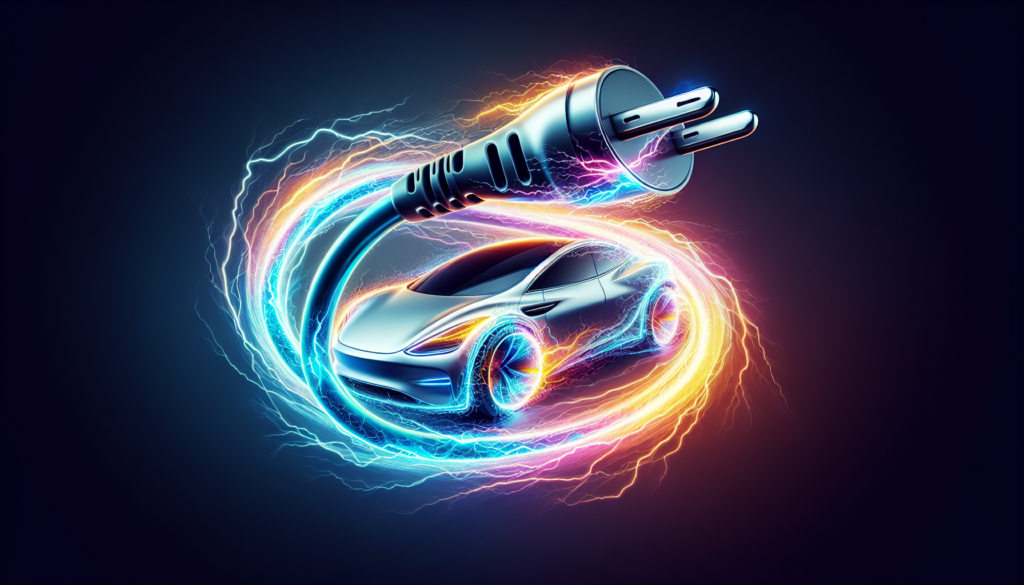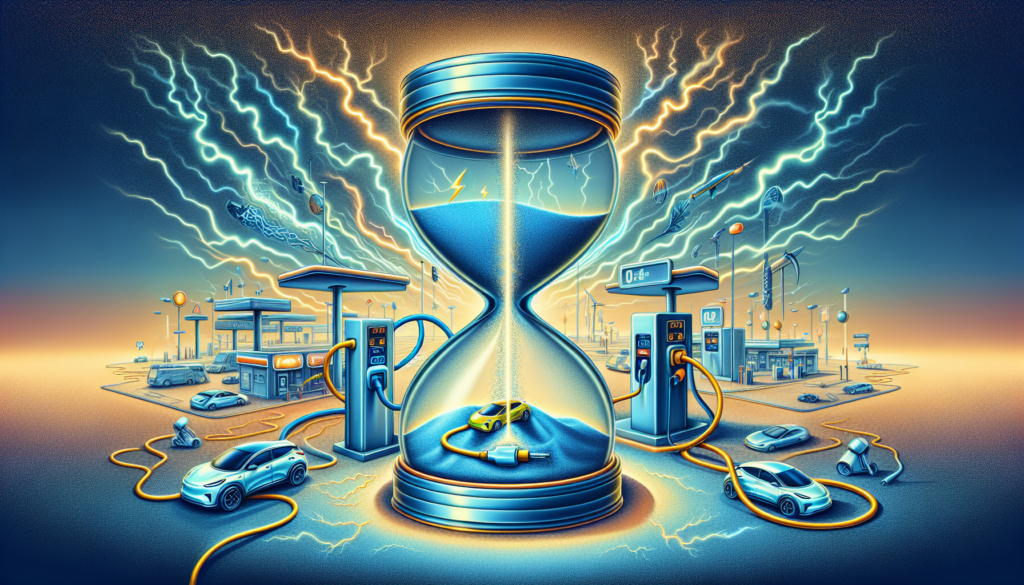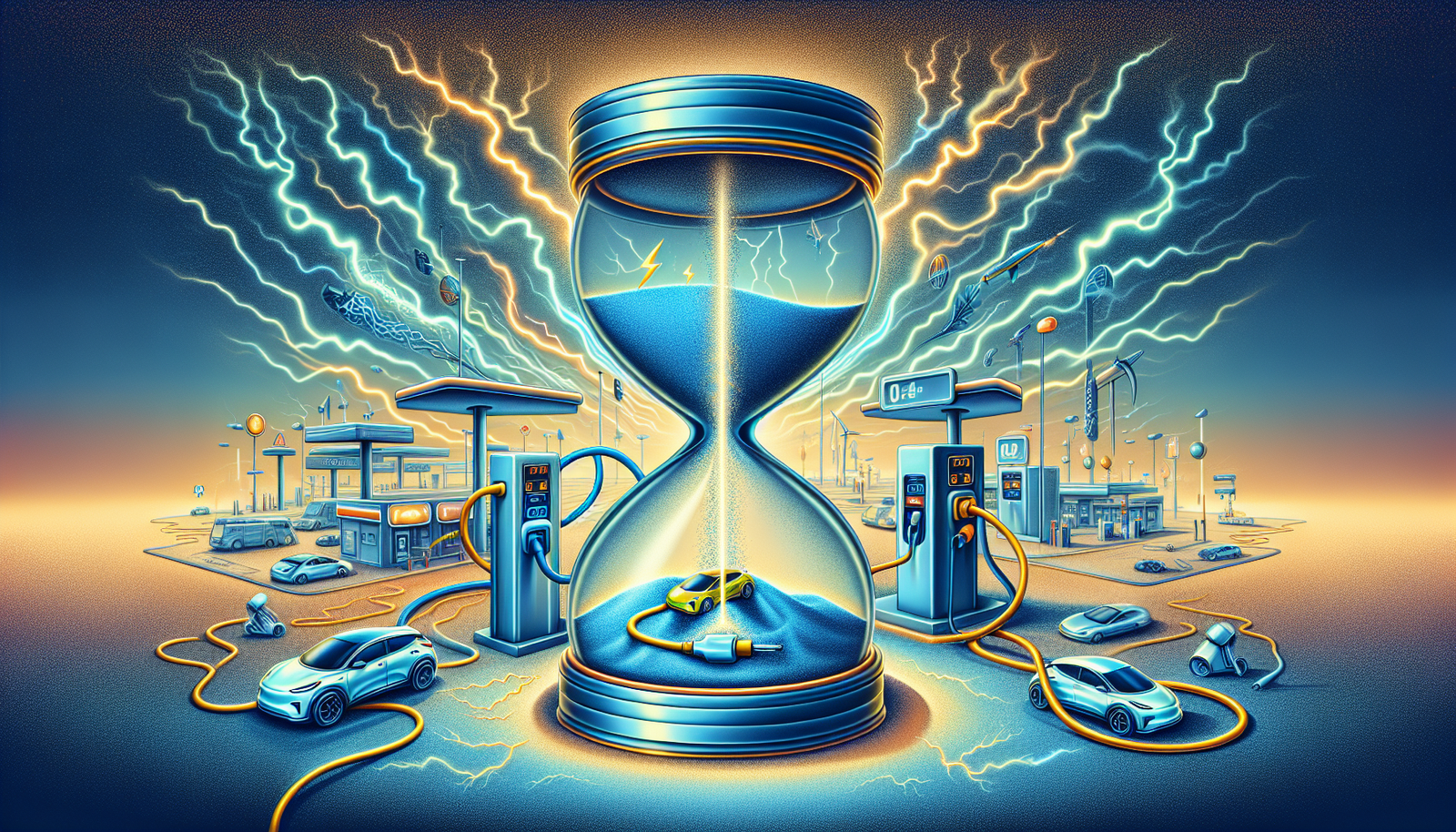Picture yourself cruising down the highway, windows down, wind in your hair, and not a care in the world. The only thing interrupting your blissful ride is the thought of your electric car’s battery running low. But fear not, because fast-charging technology for electric cars is constantly evolving to make your road trips even more enjoyable. In this article, we’ll take a closer look at how fast-charging technology is advancing, allowing you to spend less time waiting for your car to charge and more time enjoying the open road.
Current State of Fast-charging Technology
Fast-charging technology has come a long way in recent years, revolutionizing the world of electric cars. With the increased popularity of electric vehicles (EVs), the need for quick and convenient charging solutions has become paramount. The current state of fast-charging technology presents challenges, but also notable advancements and potential for the future.
Challenges in Fast-charging
One of the main challenges in fast-charging technology is the limitation of the charging infrastructure. While the number of fast-charging stations has been increasing steadily, it is still not enough to meet the demands of the growing EV market. This infrastructure gap poses difficulties for drivers, as they might struggle to find available fast-charging stations when they need them the most.
Another challenge lies in the limitations of the electrical grid. Fast-charging stations require a high amount of electricity to deliver the necessary power to quickly charge an EV. This demand puts pressure on the existing electrical infrastructure, potentially leading to strain and power outages if not managed properly.
Available Fast-charging Standards
To address the challenges of fast-charging technology, various standards have been developed by different organizations. One of the most popular fast-charging standards is the Combined Charging System (CCS), which is widely used in Europe and North America. CCS combines both AC and DC charging, allowing for a broader range of compatibility with different EV models.
Another widely adopted standard is the CHAdeMO protocol, which originated in Japan. CHAdeMO is often found in Asian markets and has gained popularity among some EV manufacturers. Additionally, Tesla has its proprietary Supercharger network, exclusively available to its customers, offering high-speed charging capabilities.
Improvements in Charging Speed
As technology continues to evolve, improvements in charging speed have been a major focus for researchers and engineers. Faster charging times are crucial for the widespread adoption of electric cars, as they provide convenience and reduce range anxiety for drivers.
Higher Power Charging Stations
One of the ways to improve charging speed is by increasing the power output of charging stations. Traditional Level 1 and 2 chargers operate at lower power levels, typically ranging from 3 to 6 kilowatts. However, the emergence of Level 3 fast-charging stations, also known as DC fast-chargers, has significantly boosted charging speeds. These stations can deliver power outputs of 50 kilowatts or more, allowing for rapid charging of EVs.
Moreover, high-power charging stations, such as those capable of delivering 150 kilowatts or higher, are being developed. These stations can replenish an EV’s battery to a significant level in a matter of minutes, reducing charging time to a fraction of what it used to be.
Ultra-fast Charging Technologies
Ultra-fast charging technologies, such as those based on extreme fast-charging (XFC), are being explored to push the boundaries of charging speed even further. XFC aims to deliver charging rates of 350 kilowatts or higher, allowing for extremely quick charging times. However, these technologies are still in the experimental phase and face challenges in terms of battery compatibility and thermal management.

Battery Advancements
The advancement of battery technology plays a crucial role in improving fast-charging capabilities. Batteries with higher energy density and improved cooling systems are key factors in reducing charging times and increasing overall efficiency.
Increase in Energy Density
One of the significant battery advancements is the increase in energy density. Energy density refers to the amount of energy stored in a battery per unit of volume or weight. Higher energy density batteries can store more energy, allowing for longer driving range and faster charging times.
Lithium-ion batteries, the most common type used in electric cars, have been the focus of research and development in increasing energy density. Scientists are exploring various approaches, such as the use of new electrode materials and solid-state electrolytes, to achieve higher energy density and improve overall battery performance.
Advanced Cooling Systems
Efficient cooling systems are essential to maintain optimal battery performance and prevent overheating during fast-charging. Cooling systems help dissipate the heat generated during charging and ensure the longevity and safety of the battery.
Advanced cooling technologies, such as liquid cooling and active thermal management systems, are being employed to enhance battery cooling capabilities. These systems can remove heat more effectively, enabling faster charging without compromising the battery’s integrity.
Smart Charging Infrastructure
The integration of fast-charging technology with the electrical grid and the implementation of smart charging infrastructure are vital for the efficient and sustainable operation of fast-charging networks.
Integration with Grid
Integrating fast-charging stations with the electrical grid allows for effective management of energy flow and optimal distribution of electricity. By connecting fast-charging stations to the grid, it becomes possible to balance the power demands and mitigate strain on the system.
Smart grid technologies are being developed to enable bidirectional communication between fast-charging stations and the electrical grid. This two-way communication facilitates load management, demand response, and dynamic pricing schemes, ensuring efficient use of electricity and reducing the impact on the grid during peak demand periods.
Demand Response Management
Demand response management is an important aspect of smart charging infrastructure. It involves adjusting charging rates and schedules based on the grid’s capacity and the overall demand for electricity. By implementing intelligent charging algorithms and systems, fast-charging stations can respond to fluctuations in electricity availability, optimizing charging operations and minimizing strain on the grid.
Demand response management incentivizes drivers to charge their vehicles during off-peak hours when electricity demand is low. This helps to balance the load on the grid and make better use of renewable energy sources, including solar and wind, which are more abundant during off-peak periods.

Wireless Charging Innovations
Wireless charging technologies are gaining momentum in the EV industry as a promising solution for fast and convenient charging.
Magnetic Resonance Charging
One of the wireless charging technologies is magnetic resonance charging, which operates on the principle of electromagnetic resonance between a charging pad on the ground and a receiver in the vehicle. This technology eliminates the need for physical connections, allowing for a seamless charging experience.
Magnetic resonance charging offers the convenience of automatically charging an EV without the need for plugging in cables. This technology is already being incorporated into specific electric vehicle models, and its further development may lead to more widespread adoption in the future.
Dynamic Wireless Charging
Dynamic wireless charging takes wireless charging to the next level by allowing vehicles to charge while in motion. This technology utilizes an electric grid embedded beneath the road surface, transferring power wirelessly to the EV through a receiver installed on the vehicle’s underside.
Dynamic wireless charging enables continuous charging during driving, significantly reducing the need for frequent charging stops. However, widespread implementation of this technology requires significant infrastructure investment and compatibility with different vehicle models, making it a prospect for the future.
Standardization Efforts
The standardization of fast-charging technologies is critical to ensure compatibility and interoperability between different EV models and charging infrastructure.
Global Charging Standards
Global charging standards, such as the Combined Charging System (CCS) and CHAdeMO, aim to establish a common framework for fast-charging stations. These standards ensure that EVs from various manufacturers can utilize the same charging infrastructure, promoting convenience and accessibility for drivers.
International cooperation and collaborative efforts among industry stakeholders are ongoing to develop global charging standards that can accommodate future advancements in technology.
Interoperability Challenges
While significant progress has been made in establishing global charging standards, interoperability challenges still exist. Some fast-charging networks are exclusive to specific EV manufacturers, limiting charging options for certain drivers.
Efforts are underway to address this challenge by promoting open access to charging infrastructure and encouraging interoperability among different networks. This includes the development of roaming agreements and the implementation of common payment systems, making it easier for EV drivers to access fast-charging stations regardless of their chosen vehicle brand.
Impact on Energy Grid
The widespread adoption of fast-charging technology has a profound impact on the energy grid, presenting both opportunities and challenges.
Load Management
Fast-charging stations, especially high-power ones, can put a significant strain on the energy grid during peak demand periods. Load management strategies, such as demand response and load balancing, are crucial to mitigate the impact on the grid and ensure a stable and reliable supply of electricity.
By implementing smart charging algorithms and utilizing intelligent grid management systems, the load on the grid can be optimized, ensuring that fast-charging operations do not overwhelm the electrical infrastructure.
Renewable Energy Integration
One of the advantages of fast-charging technology is its compatibility with renewable energy sources. Electric vehicles can act as energy storage units, allowing for the integration of renewable energy generation, such as solar and wind, into the charging process.
Renewable energy integration reduces the reliance on fossil fuels and promotes a greener and more sustainable energy grid. Smart charging algorithms can dynamically adjust charging rates based on the availability of renewable energy, maximizing the utilization of clean energy sources and minimizing carbon emissions.
Charging Time Reduction Techniques
In addition to advancements in technology and infrastructure, several techniques are being explored to further reduce charging time for electric cars.
Battery Swapping
Battery swapping is a technique that allows drivers to exchange depleted batteries for fully charged ones at specialized stations. This process eliminates the need for lengthy charging times and provides a swift solution for long-distance travel.
While battery swapping has been implemented in some regions, challenges remain in terms of standardization and compatibility across different EV models. However, as technology progresses and standardization efforts continue, battery swapping may become a viable and widespread solution for reducing charging times.
Cell-to-pack (CTP) Technology
Cell-to-pack (CTP) technology is another approach to streamline the charging process and reduce charging time. CTP involves the elimination of the traditional module-level packaging in battery packs, directly connecting the battery cells to the pack. By removing the interconnecting materials, CTP reduces the charging path and improves overall efficiency.
This technology is still in the early stages of development, but it shows promise in significantly reducing charging times while maintaining battery reliability and safety.
Fast-charging Network Expansion
To meet the growing demand for fast-charging capabilities, the expansion of charging networks is crucial.
Public Fast-charging Stations
Public fast-charging stations play a vital role in enabling long-distance travel and providing charging options for those without access to private charging facilities. The establishment of strategically located fast-charging stations along major highways and in urban areas ensures convenient access for electric vehicle drivers.
Public charging network operators, automotive manufacturers, and governments are collaborating to expand the coverage of fast-charging stations, encouraging the adoption of electric vehicles and improving the charging experience for all.
Private Charging Facilities
In addition to public stations, the expansion of private charging facilities is essential for widespread adoption of electric cars. Residential charging solutions, such as home-based Level 2 chargers, allow EV owners to conveniently charge their vehicles overnight.
Moreover, workplace charging infrastructure provides an opportunity for EV drivers to charge their vehicles during the day while they are at work. This integration of charging facilities into both residential and commercial properties helps to bridge the charging infrastructure gap and further promote the use of electric vehicles.
Future Directions
The future of fast-charging technology holds exciting possibilities for the electric vehicle industry. Continuous research and development efforts are driving innovation in multiple areas.
Solid-State Battery Technology
Solid-state batteries are an emerging technology that shows promise in revolutionizing the EV industry. These batteries utilize solid electrolytes, offering higher energy density, improved safety, and faster charging capabilities compared to traditional lithium-ion batteries.
The integration of solid-state battery technology into electric cars would significantly reduce charging times while providing longer driving ranges, making electric vehicles even more practical and competitive with internal combustion engines.
Smart Charging Algorithms
Smart charging algorithms are expected to play a pivotal role in optimizing fast-charging operations. These algorithms take into account various factors, such as electricity demand, energy prices, and driver preferences, to dynamically adjust charging rates and schedules.
By leveraging real-time data and artificial intelligence, smart charging algorithms can balance the load on the grid, prioritize renewable energy usage, and minimize charging times. This intelligent charging management can further enhance the efficiency and sustainability of the fast-charging infrastructure.
In conclusion, fast-charging technology for electric cars has made significant progress, with improvements in charging speed, battery advancements, smart charging infrastructure, wireless charging innovations, and standardization efforts. As technology continues to evolve, the future of fast-charging holds exciting prospects, including solid-state batteries and smart charging algorithms. With ongoing efforts to expand fast-charging networks and integrate renewable energy sources, the accessibility and sustainability of electric vehicles are set to improve, making electric cars a viable and practical choice for drivers worldwide.

